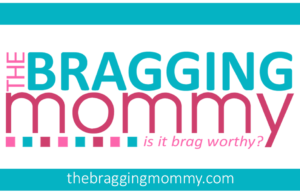Photo by Andrea Piacquadio on Pexels
In the USA, housing adapted for the elderly is the exception, not the rule: only 40% of residential buildings are aging-ready, according to data from the US Census Bureau. And this only goes for basic features like a step-free entryway as well as having a bedroom and a full bathroom on the first floor. Not to mention other substantial features like installing a stair life, wheelchair, and many others.
In this article, we tell you why it’s essential to have more homes adapted for seniors with reduced mobility and how to make your home more accessible for senior parents.
A Home Tailored to Every Need
Before we get down to work and make home accessibility a reality, you should consider the specific needs of your loved ones, especially if they have reduced mobility, a disability, or some stage of dementia.
Reduced Mobility or Disability
Finding homes adapted for seniors with reduced mobility or disabilities can be a challenge. These homes are designed to ensure comfort and accessibility, encouraging residents to enjoy greater independence and quality of life.
Such homes eliminate architectural barriers and facilitate access for people in wheelchairs or mobility scooters. For example, Marc’s Mobility offers folding mobility scooters for seniors that are easy to store at home when not in use. There are also models with a lifting seat to help users reach objects from higher shelves.
The doors and rooms should be wider to ensure easy movement and access for those using mobility devices, the home is free of obstacles and has ramps that replace stairs.
Neurodegenerative Diseases
If you’re looking for greater accessibility at home to improve the quality of life of a loved one suffering from a neurological disorder, it’s recommended that the transformation be gradual. This way, you’ll avoid confusion that could lead to an episode of agitation.
Maintaining a quiet and accessible home is also part of caring for people with Alzheimer’s or any other type of dementia. Some of the most notable recommendations include eliminating bright colors from furniture or walls, keeping material objects they feel attached to (but that don’t become an obstacle), and installing an adapted bed.
Home Accessibility: Room by Room
For senior-friendly homes to qualify, they must meet certain requirements in every space of the home:
Living Room
The living room is often the busiest space and the one where we spend the most time, so these spaces in homes adapted for seniors should be as clear as possible and have enough space to facilitate movement, regardless of their circumstances.
It’s important to have comfortable, ergonomic sofas, neither too high nor too low, that make it easier to sit down and get up when needed. It’s recommended that furniture have rounded edges and no bright colors. It’s also advisable to have a cordless phone in this room so they don’t have to rush when getting up to answer calls.
Kitchen
To ensure accessibility in the home, install sliding cabinets and doors to reduce the risk of head injuries and other types of injuries, or alternatively, use corner protectors. To better see the contents of dark cabinets, it is recommended to install lights.
Countertops in homes adapted for seniors are lower (especially for those who use wheelchairs), and appliances are placed at an appropriate height. For cooking, purchase easy-to-maintain appliances: ovens and microwaves with side doors. Induction cooktops with temperature indicators are also preferred.
Additionally, to safeguard home security, you can install a smoke detector.
Bathroom
When it comes to adapting our home, the bathroom is one of the rooms where we should put the most effort since most domestic accidents suffered by older people occur in the bathroom.
Elderly-friendly homes rule out bathrooms with bathtubs and opt for those with a non-slip, floor-level shower tray and a built-in seat. These homes also include grab bars to make getting in and out of the shower easier.
If space allows, get a chair nearby to place clothes on, as well as a dehumidifier to prevent slippery surfaces, especially in areas where humidity is most prevalent.
Bedrooms
In homes with a second floor, bedrooms are often located on the upper floors. To limit the elderly person’s strain, it is recommended to relocate the bedroom to the ground floor and, ideally, as close as possible to a bathroom. Otherwise, the installation of a stair lift is recommended.
If the person has to spend a lot of time in bed, an electric bed is recommended to facilitate access at bedtime and getting up, also ensuring good sleep hygiene.
As in the bathroom, it’s a good idea to have a chair at hand to place clothes on. The nightstand should also be at a suitable height from the bed so that it can be easily reached from the bed. As for the light switches, it’s ideal to have one at the entrance to the bedroom and another next to the bed, both of which should be visible in the dark. To achieve this, simply place glow-in-the-dark stickers on them.
Hallways and Stairs
Hallways in homes adapted for seniors with reduced mobility should be at least 35 inches wide. If there is furniture that restricts this width, it’s best to relocate it. To make the elderly person feel more secure and ensure accessibility in the home, install a handrail.
To adapt the stairs for wheelchair users, a stair lift or platform can be installed. If a wheelchair is not required, and if they are not already installed, it’s recommended to install handrails and light switches (with their corresponding fluorescent stickers) at the top and bottom of the stairs.
How to Adapt Your Home for an Elderly Person – General Rules
There are countless cases in which the environment is not adapted to the needs of the elderly or those with some type of disability and/or dependency, making the home itself an unfavorable space for their mobility.
Each room has different rules, but all of them must take into account the following:
- Remove obstacles that hinder movement and access. Although there may be valuable objects, it’s important to consider whether they impede or hinder freedom of movement within the home. An example of this is rugs, which can pose an avoidable risk of falls for older adults if they’re not properly secured to the floor.
- Good lighting. Not only does it reduce the likelihood of falls, but it also creates a more comfortable and welcoming environment. Invest in motion-detecting light sensors, ideal for hallways or living rooms.
- Less is more. Sometimes, it’s not a matter of adding safety devices but rather minimizing risks. Open spaces or well-organized closets are recommended.
Conclusion
Adapted homes for seniors or people with disabilities facilitate their daily independence and contribute to an improved quality of life. Knowing that each room has its own unique characteristics and adapting it accordingly will make life easier for the individual, and senior parents will not be exposed to avoidable household accidents.

